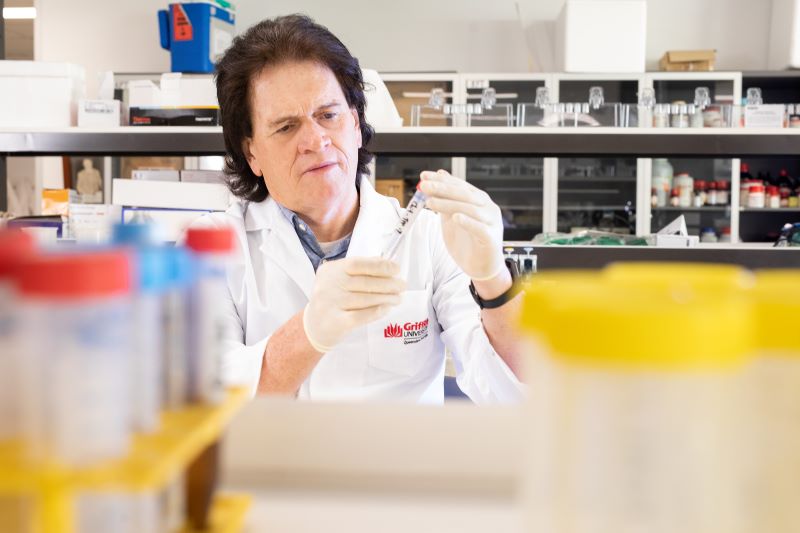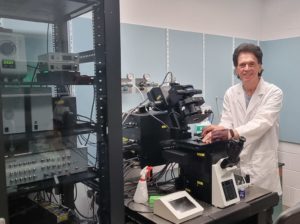
Griffith University researcher has discovered a surprising new strategy for the treatment of one of the most common types of breast cancer, estrogen receptor (ER) positive breast cancer.
Director of the Centre for Cancer Cell Biology and Drug Discovery Professor Des Richardson said the mechanism discovered is totally different to that found in any other drug out there in clinics today.
"For breast cancer patients, it is utterly devastating when tumour resistance and metastasis develop and the drug treating their cancer is no longer effective," Professor Richardson said.
"We believe this to be a new strategy to treat breast cancer and we're very excited about it!"
This research has been funded nearly $900,000 by the National Breast Cancer Foundation (NBCF) of Australia with Professor Richardson as Chief Investigator.

Professor Richardson explains breast cancer is not just one disease, but multiple diseases wrapped up under one "umbrella".
One major type of breast cancer, estrogen receptor positive breast cancer, is driven by a "bad guy" called the oestrogen receptor.
In estrogen receptor positive breast cancer, cancer cells "feed off" the patient's naturally produced hormones such as oestrogen , worsening the offending tumour.
Drugs such as Tamoxifen that are commonly used to treat breast cancer, suppress cancer cell activity and interrupt growth and progression of the tumour by attacking and blocking the estrogen receptor.
Professor Richardson said Tamoxifen only goes after and attacks the estrogen receptor, and unfortunately, with repeated use, cancer resistance starts to "kick in", leading to aggressive relapse, metastasis, and high mortality.
 "One of the reasons for Tamoxifen resistance is that the oestrogen receptor works together with a number of other hormone receptors," he said.
"One of the reasons for Tamoxifen resistance is that the oestrogen receptor works together with a number of other hormone receptors," he said.
"When the estrogen receptor has been disabled by a drug treatment like Tamoxifen, the other receptors start working together to continue to positively "feed" the offending tumour.
"Our recent studies have examined how a new type of anti-cancer agent responds and reacts with major hormone receptors to discover a new strategy for treating estrogen receptor positive breast cancer.
"The good news is that this new drug we've been working with strongly attacks all of the receptors, so instead of going after one receptor like Tamoxifen that targets the oestrogen receptor only and leads to drug resistance, we're using one drug to go after five or more receptors at once, achieving a potent anti-cancer effect."
Professor Richardson is a National Health and Medical Research Council (NHMRC) Senior Principal Research Fellow and is affiliated with the Griffith Institute for Drug Discovery and Menzies Health Institute Queensland.






